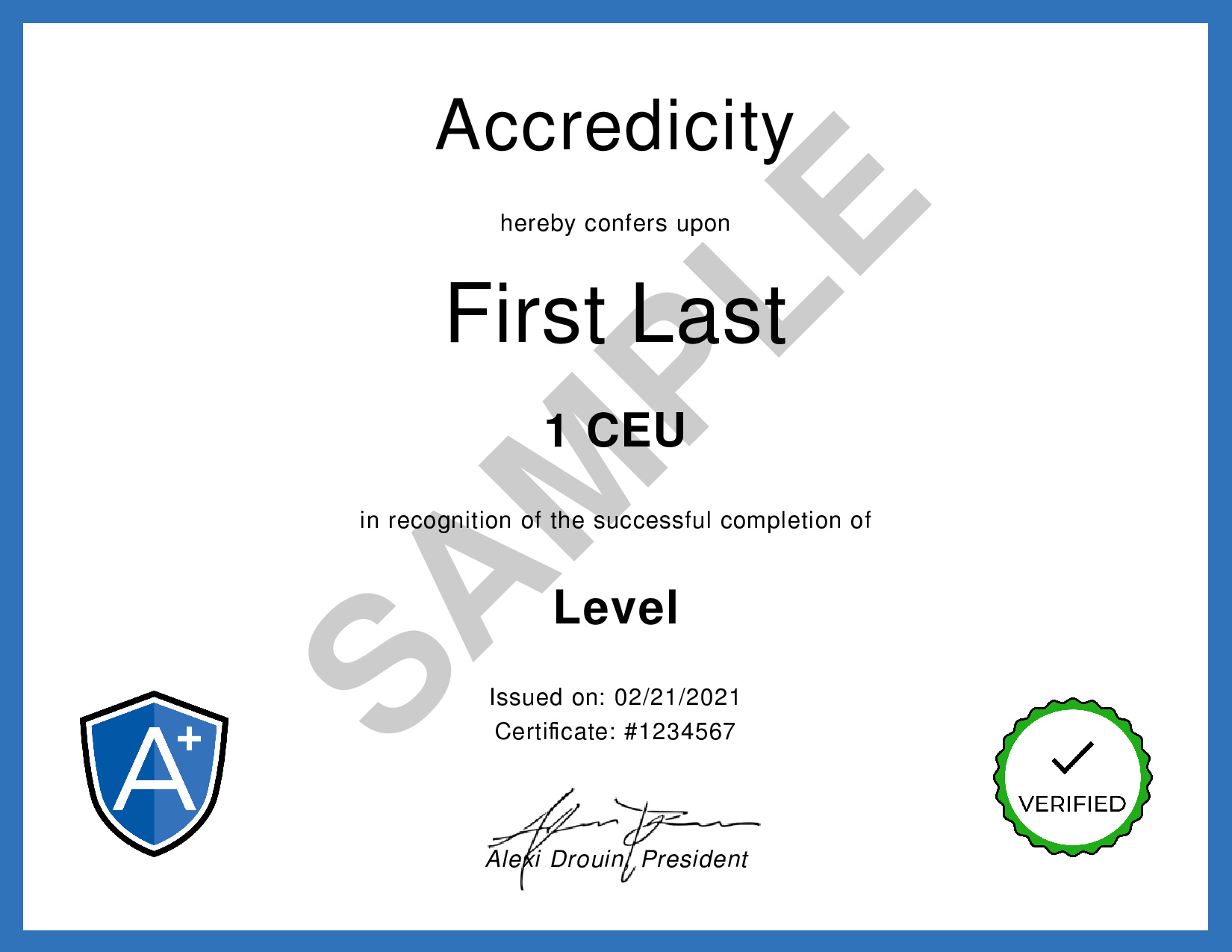The Explainer: Blue Ocean Strategy | HBR
Reference: Harvard Business Review. (2019, July 16). The Explainer: Blue Ocean Strategy [Video]. YouTube.
We Make Your Education Count

Get the Credit You Deserve and Become the Most Attractive Job Candidate by Earning and Posting A+ Badges to Your Linkedin Profile.
Sign Up to Get Started at Accredicity
|
Discover how Cirque du Soleil created a new, profitable market space with Blue Ocean Strategy. Blue Ocean Strategy, developed by W Chan Kim and Renée Mauborgne and featured in Harvard Business Review (HBR), is the concept of creating new market spaces and eliminating competition by blurring industry boundaries. This concept was demonstrated by Guy Laliberté in 1984 when he co-founded Cirque du Soleil, which quickly surpassed the revenues of Ringling Brothers in the declining circus business. In a red ocean, companies strive to out-perform rivals and grab a bigger share of existing demand, but in a blue ocean, companies create and capture unknown markets where demand is created. Cirque du Soleil achieved this by making their acts more artistic and sophisticated, eliminating costly animal acts, and creating a new customer base. By pursuing both differentiation and low cost, or value innovation, Cirque invented a market space that was hard to copy, resulting in a profitable business over 10 to 15 years. Learning Outline1. Business universe consists of two kinds of markets: red oceans and blue oceans Instructional ContentThe Explainer: Blue Ocean Strategy Blue Ocean Strategy, a concept developed by professors W Chan Kim and Renée Mauborgne, is a business strategy that seeks to create new and profitable market spaces outside of the well-defined boundaries of traditional industries. This type of strategy is often seen in the success story of Cirque du Soleil, a company founded in 1984 by Guy Laliberté that quickly achieved revenues that incumbents like Ringling Brothers had taken more than a century to attain, despite the fact that the circus business was in long term decline. Cirque du Soleil was able to thrive despite the dismal environment by adopting a Blue Ocean Strategy, which allowed them to create a new and more profitable market space. They did this by making the circus acts more artistic and sophisticated, which drew in a whole new group of customers who were willing to pay premium ticket prices. They also eliminated several costly elements of the traditional circus, including animal acts and star performers. This allowed them to pursue both differentiation and low cost in what Kim and Mauborgne called value innovation. The simultaneous pursuit of value and cost is the logic of Blue Ocean Strategy, and companies that can create these blue oceans can benefit from them for a period of 10 to 15 years since they are hard for rivals to copy. In order to realize the potential of a Blue Ocean Strategy, companies should chart a strategic course that goes beyond existing industry boundaries to create new market space. The concept of Blue Ocean Strategy is an innovative way of thinking about how to create new and profitable market spaces and achieve success in any industry. By taking the time to explore this concept, companies can find ways to differentiate themselves from the competition and create value for their customers. Management
|

Cirque du Soleil is like a boat sailing in a big, blue ocean. They used something called Blue Ocean Strategy to make their journey successful. This means that instead of competing with other boats in a crowded and red ocean, they went out and found a new space to explore, which was a blue ocean. They did this by adding more artistic and sophisticated acts to their performances, and also by getting rid of costly elements like animal acts and star performers. This new strategy allowed them to create a whole new market space and make more money. So the next time you want to be successful, remember the wise words of the Blue Ocean Strategy: don't follow the crowd, create your own path! Video Quotes1. "Red oceans represent existing industries and markets where industry boundaries and the rules of competition are well-defined. Companies strive to outperform rivals and grab a bigger share of existing demand." - W Chan Kim and Renée Mauborgne 2. "By contrast, blue ocean, or market creating strategy, is about how to create and capture unknown markets where demand is created rather than fought over." - W Chan Kim and Renée Mauborgne 3. "The simultaneous pursuit of value and cost is the logic of Blue Ocean strategy." - W Chan Kim and Renée Mauborgne Related Quotes“We’re not just trying to compete in a red ocean, where there are lots of sharks swimming around attacking one another. We’re trying to create a blue ocean, where there’s lots of room to grow and lots of opportunity.” - W. Chan Kim, Co-author of Blue Ocean Strategy “The goal of the blue ocean strategy is to create uncontested market space and make the competition irrelevant.” - Renée Mauborgne, Co-author of Blue Ocean Strategy “The only way to beat the competition is to stop trying to beat the competition.” - W. Chan Kim, Co-author of Blue Ocean Strategy Competencies1. Business and Enterprise Learning Outcomes1. Analyze: Evaluate the concept of the Red and Blue Oceans and explain how Cirque du Soleil created a value innovation in the market. 2. Evaluate: Analyze the trade-offs between value and cost that Blue Ocean Strategy presents and determine how Cirque du Soleil was able to achieve both. 3. Create: Develop an innovative business strategy that incorporates the principles of Blue Ocean Strategy. 4. Apply: Utilize the concepts of Blue Ocean Strategy to an existing market and explain how it can create new market space. 5. Understand: Explain the potential benefits of using Blue Ocean Strategy when compared to competitive market strategies. 6. Remember: Identify the two authors of Blue Ocean Strategy and the main points they discuss in their research. Sample Answers1. I learned that blue ocean strategy is about creating and capturing unknown markets where demand is created rather than fought over. Companies like Cirque du Soleil do this by altering the boundaries of an existing industry and pursuing both differentiation and low cost. This allows for the simultaneous pursuit of value and cost, resulting in value innovation. 2. Blue ocean strategy involves creating a new and profitable market space without making the typical trade off between value and cost. Companies that are able to create blue oceans usually reap the benefits for 10 to 15 years because they are hard for rivals to copy. 3. By studying more than thirty industries, Kim and Mauborgne determined that blue oceans provide a way to escape the red ocean of intense competition. This is because blue oceans allow companies to chart a strategic course past traditional industry boundaries and create new market space. HBRHBR is a global multimedia company that publishes business content in the form of articles, videos, webinars, and podcasts. Founded in 1922, HBR is the world's leading authority on business strategy and management best practices. The expert featured in the video is Renée Mauborgne, a professor at INSEAD and co-author of the book Blue Ocean Strategy. She is also a co-founder and Senior Fellow at the INSEAD Blue Ocean Strategy Institute. HBR Learning DesignThese three competencies - Business and Enterprise, Creativity and Innovation, and Strategic Thinking - are essential for successful management. Business and enterprise competencies are important for understanding the market and business environment, and for making decisions that best serve the organization. Creativity and Innovation competencies allow managers to develop innovative solutions to problems and to drive process improvements. Strategic Thinking competencies help managers plan and manage resources to achieve organizational objectives. AssessmentQ: What is the logic of Blue Ocean strategy? Answer: D. Value innovation QuestionsQuestions for Students to Learn About the Subjects and Topics of the Video: Questions for Real-Life Examples and Scenarios: KeywordsBlue Ocean Strategy, Value Innovation, Market Creating Strategy, Market Competing Strategy, Create New Market Space Facts1. Cirque du Soleil achieved revenues that took incumbents over a century to attain, despite the long-term decline of the circus industry. Trends1. Create a virtual reality game that simulates the Blue Ocean Strategy and allows users to experience the concept first-hand. SourceThis learning instructional guidance was formulated using the GPT-3 language model created by OpenAI. ShareCirque du Soleil's success story shows the power of #BlueOceanStrategy! They blurred industry boundaries to create new, profitable markets & pursued both differentiation & low cost for long term success. 🦸♂️ #Business #Circus #CirqueDuSoleil #Strategy #ValueInnovation @Accredicity |








 34 Creds - Management
34 Creds - Management



